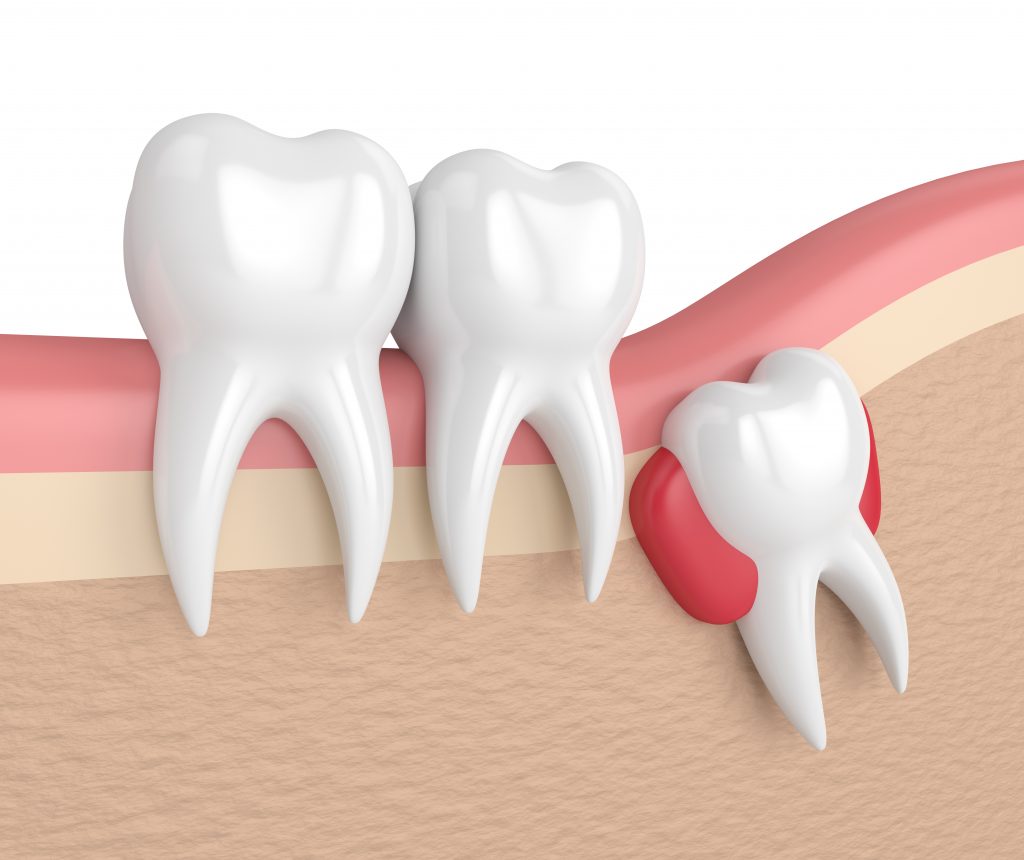Impacted teeth are teeth that form inside the gums but for various reasons can not protrude from the gums. The most obvious example of impacted teeth that most of us are familiar with are wisdom teeth. Usually, due to the small size of the jaw, most people need surgery for their wisdom teeth. In the following, we will get acquainted with the types of hidden wisdom teeth.
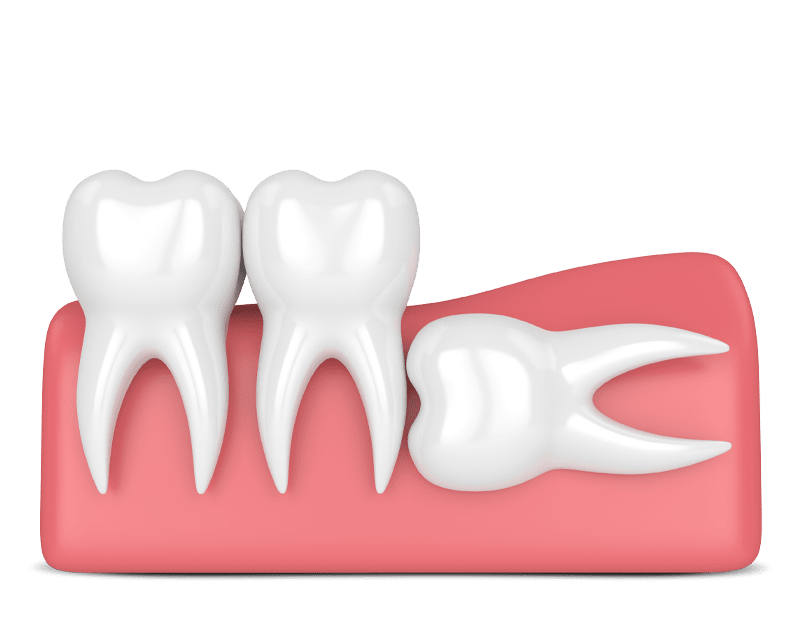
impacted teeth
تاریخ: ۲۹ آذر ۱۳۹۹ dr etemadifar
impacted teeth
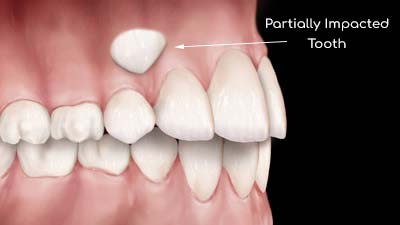
Which teeth are impacted?
Three types of teeth have the potential to be impacted. First the wisdom teeth, then the canines and the small mill teeth can be turned into impacted teeth.
The most common impacted teeth are wisdom teeth and the second most commonly affected tooth is the canine tooth.
Wisdom tooth impacted:
The third wisdom tooth is the last tooth to grow into adulthood. Everyone has 4 wisdom teeth at the very end of their mouth. Wisdom teeth usually erupt between the ages of 17 and 25. If there is not enough space for wisdom teeth to grow, impacted wisdom teeth are created. Sometimes, due to the filling of the outer space of the wisdom tooth by the side teeth, the eruption position is not created for the wisdom tooth.
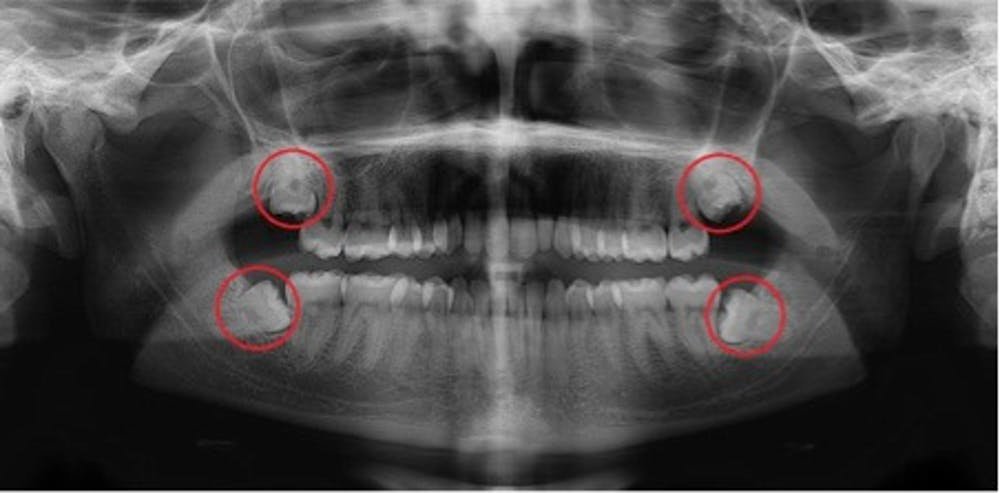
impacted canines
Maxillary canines usually have the highest impactness of canines . canines are strong teeth with long roots in the jaw. These teeth usually erupt fully at the age of thirteen and are among the last teeth to erupt in the front of the mouth.
canines are also known as "eye teeth" and are one of the strongest teeth in the mouth with the longest roots. Impacted canines have not come out of the gums due to abnormal growth, crowded teeth, and sometimes growth on the soft tissue of the gums. When a tooth cannot grow and is stuck in the soft tissue and bone below the surface, it is referred to as a impacted tooth.
Small mill tooth impaction:
Another tooth that is implanted is the small mill teeth. The impaction of this tooth, like the canine tooth, can be detected at an early age and can be restored to its original position by orthodontics and surgery.

Cause of impacted teeth:
Tooth accumulation, improper position of tooth buds, extra teeth, lack of space in the dental arch, cysts, undeveloped dental roots and oral habits such as finger sucking are some of the causes of impacted teeth.
Symptoms of impacted teeth:
In some cases, impacted teeth may have no symptoms. In some cases, a missing tooth may have the following symptoms:
- The gums are red, swollen or bleeding.
- Persistent bad breath
- Bad taste in the mouth
- Pain when opening the mouth, or when chewing and biting
These symptoms may persist for weeks or months.
How can impacted teeth be detected?
From the age of 7, the position of the teeth can be informed. A radiograph of the teeth reveals the impacted teeth. Since canines should erupt at the age of thirteen, if your child's teeth are delayed at this age, be sure to see your dentist to remove them. Wisdom teeth are also recognizable at the age of 17 years.
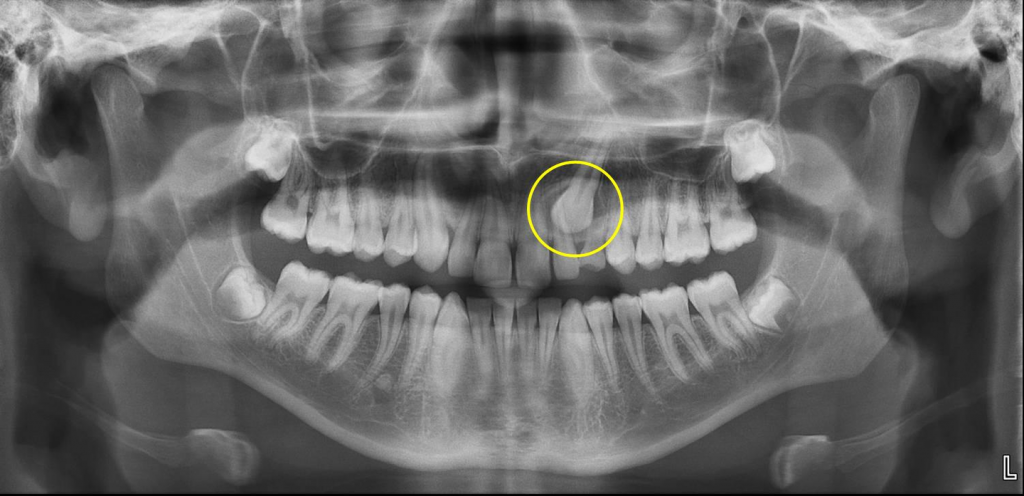
Complications of impacted teeth:
Because completely impacted teeth never pass through the gums, you can not take care of them. But if the teeth are half-impacted, and partially protruding from the gums, they are more difficult to clean than regular teeth. This puts them at greater risk for dental problems, including:
- Create holes
- Pressing on the roots of adjacent teeth may cause root resorption.
- Infection
- Crowding of the surrounding teeth and creating irregularities in the position of the teeth
- A cyst or tumor, which can damage the roots of the surrounding teeth or destroy bone. And the most important complication is impacted teeth.
- Absorption of adjacent bone or teeth
- Caries and gum disease in adjacent teeth
How long does it take for the impacted tooth to return to its original position?
Because tooth movement changes by about one to two millimeters per month, it usually takes more than a year for the impacted tooth to return to its original position.
Treatment of impacted teeth:
If the impacted tooth is a wisdom tooth, it is usually recommended to the patient to have the tooth surgically removed, because it will not be useful for the patient. In the case of other impacted teeth, the patient's condition determines the proposed treatment.
The most common and important impacted teeth (except wisdom teeth) are high canines, the lack of which can cause significant complications in terms of teeth and the appearance of the patient and make serious orthodontic treatment a serious challenge. Therefore, the decision to keep and gradually remove them or surgery and discard the upper canines is doubly important. These teeth usually appear in the mouth between the ages of 11 and 13.
Can impacted teeth be treated with orthodontics?
Impacted teeth, especially impacted canines, are easily seen by gingival surgery, and then orthodontics, the impacted tooth finds its way, but before surgery, orthodontics must create enough space for the tooth to grow and protrude. . In fact, orthodontic brackets create the necessary space in the dental arch and then, with surgery and orthodontics, the impacted canine tooth is directed outwards. To guide the impacted tooth to its original position, a chain is attached to the orthodontic wire and bracket attached to the impacted tooth. The archwire, which is the name of this golden chain, pulls the impacted tooth outwards, and finally, this tooth returns to its original position.
All types of impacted teeth can be returned to their original position with this method, but this method is usually used for canine incisors because the roots of canines are large and have high strength. This procedure will be more difficult for large mill teeth and wisdom teeth.
Considering that the remaining permanent teeth are preferable to implants, as much as possible should be tried to guide the desired tooth to the dental arch. If the patient needs orthodontic treatment due to dental irregularities along with tooth extraction and at the same time suffers from tooth occlusion, sometimes the impacted tooth can be considered as one of the teeth to be extracted.
Why it is important to treat impacted teeth:
Implanted teeth are orthodontized based on the position of the tooth and in other cases, they are terminated by extraction and surgery. Because these teeth can lead to infection, cysts, tumors, and fractures of the jawbone if they are not extracted, they must be removed immediately. On the other hand, this extraction should be done at a younger age, because at an older age, we are at risk of heart disease, hypertension, diabetes, lack of bone density and swelling of the jaws.
